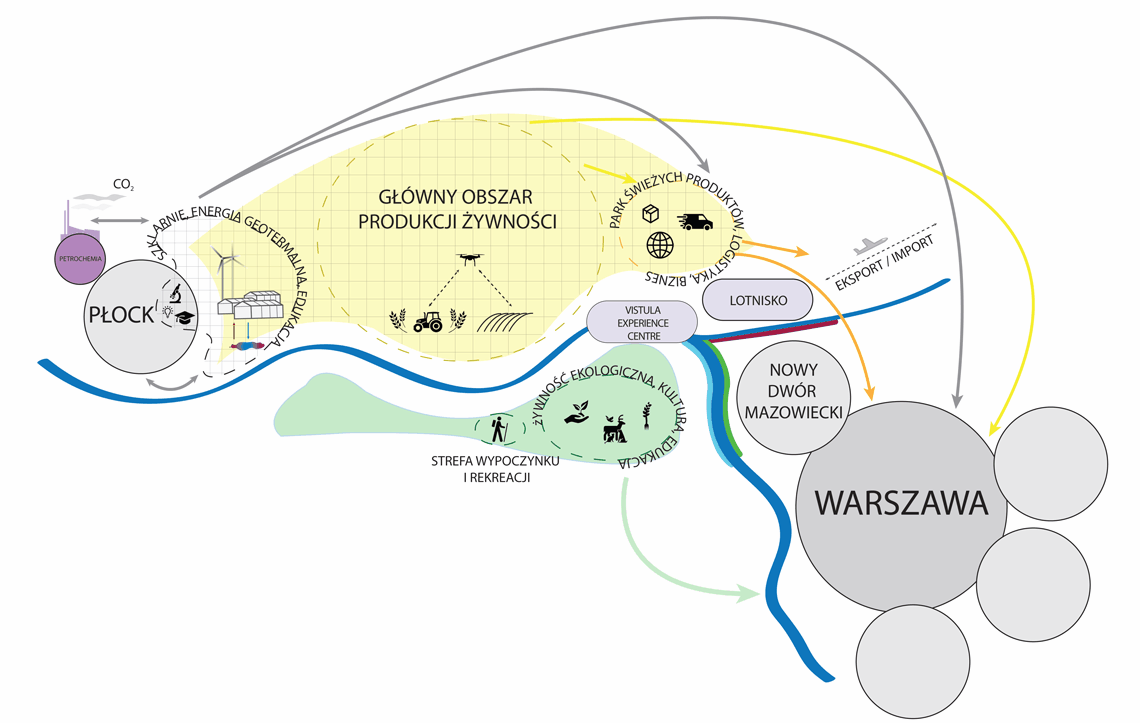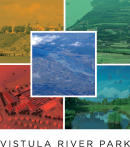Future of the vistula agricultural riverside areas of mazovia
What economic role in the region’s development will the areas play during the next 10-20 years?
What kind of approach needs to be employed for the activities in the area, considering changing social expectations, economic surrounding and climate conditions?
Which functions will define the agriculture’s profile, provide employment, develop entrepreneurship and shape the area’s landscape?
The processes in the rural areas are linked with the ways of functioning and adjustment of farms to the changing market, as well as social and spatial conditions. Among other things, they are dependent on the expectations of consumers and quality of products. The allocation processes of agricultural land for non-agricultural purposes related to, among others, the development of housing and logistics centres have become characteristic for rural areas in urban environments. The social identity of towns and villages in Warsaw’s neighbourhood is a reflection of contemporary demographic, social and economic changes, deeply altering the structure and funcionality of rural areas.
Preserving valuable elements of these areas, as well as directing agricultural activities to fit the needs of changing society, food security and development of energy production technologies in the best possible way, remains the crucial issue. However, natural environment, soil, landscape, biodiversity and rational management of water resources are still significant. Especially in the context of unstable water balance and progressive climate changes. In addition, rural development has to face the challenges of depopulation, demographic changes and keeping young, well-educated people in the country.
Prospect of activities
The prospect of social and economic growth of the area is determined by an enormously absorbent and wealthy market of the Warsaw agglomeration and the network of European bonds. It creates a challenge of a proper water management in the area, especially in terms of providing a proper amount and quality of water in the situation of its deficit, so it means a series of other technical investments aiming at the development of water system and deciding about the development of rural functions of the area.
Current technical achievements and engineering knowledge offer a wide range of possible solutions. However, it is worth to ask the question: why should we do this? The question is crucial in the context of deciding about what is or what will be the driving force of agriculture in the future, as well as how the profile of agricultural production and consumers’ expectations will decide about the development of the whole area. Also, what role can Mazovia play in the process. The essence of the activities taken is to consider optimum conditions for the development and investment in agriculture areas. Openness to co-operation and sharing of knowledge form a foundation for economic and social development of the rural areas.
Food strategy of the region – mazovia’s green triangle
The area of works, for which the agricultural functions have constituted a primary source of development and shaped the structure of the local economy may be a pilot area for working out the principles of such strategy. The strategy may determine, which profile of agriculture and which direction of the technological progress will serve the social interest, food safety and regional environment and build addtional value for agriculture. Location in a direct neighbourhood of the Warsaw agglomeration, the Modlin Airport and the Płock strategic alimentary area constitutes an important argument for preparing a complex programme of activities directed at the area’s development in at least the next 20 years.
New approach of food production is a necessity of these times. The area has a potential for working out a modern model of production, processing and food distribution. It is created by the so-called Mazovia’s Green Triangle, encompassing the eastern part of Płock, western part of Nowy Dwór Mazowiecki and Płońsk.
The area may constitute an important part of the Agro Vistula River Park:
- Płock – as a source of technical knowledge, accessible energy and education,
- Płońsk – as a production, co-ordination and marketing spot,
- Nowy Dwór Mazowiecki – as a logistic centre – Green Point.
The development of Mazovia’s Green Triangle may inter alia: foster the creation of an international food distribution network, stimulate the development of innovation, business surrounding, education, laboratories, research centres (Płock, Płońsk), support and develop the local distribution system (distribution centres, storage and packaging systems in the surrounding of Nowy Dwór Mazowiecki), or favour the formation of clusters, production groups and the entire chain of bound services. The project of Mazovia’s Green Traingle integrates agriculture, processing industry, distribution network, transport and logistics (references: Fresh Park Venlo, Food Valley in co-operation with Wageningen University and Research Center).
Multifunctional direction of agricultural areas’ development
The traditional model of agriculture and farmland management can develop towards multifunctionality. New functions can replace or complement the existing activities. These can be recreational, touristic, health-related and therapeutic. Multifunctional development promotes the potential for generating income through non-agricultural activity, where the traditional model of agriculture becomes permeated by other sectors of economic activity. They are often determined by the local conditions, i.e. geographical location, landscape, environmental setting or proximity of urban agglomerations. Multifunctional development should foster the improvement of the quality of life, space, neutralise the negative demographic and economic processes. It is reasonable to link the activities towards the multifunctional development with those which secure the quality of spatial development, protect the landscape and environmental values.
Examples of multifunctional development models:
- GREENHOUSE TECHNOLOGIES – MULTIFUNCTIONAL GREENHOUSES
Modern greenhouse complexes, besides the primary role pertaining to cultivation and farming, combine additional functions. Greenhouses can also be used for recreation, housing and education, among others. They can serve as exhibition, conference and training spaces or restaurants. Modern greenhouses, which are advanced constructions, have closed-loop groundwater systems. These can be used for both heating, as well as cooling of the greenhouse spaces, depending on the time of the year.
- MULTIFUNCTIONAL RESERVOIRS
These buffers are created based on the existing network of surface water, which slows down the drainage of water into Vistula, combined with irrigation systems for agriculture and infiltration for the landscape and natural habitats. There is a possibility to integrate these reservoirs with other complexes to adapt them for recreation and agri-tourism, thus creating a space of both natural and aesthetic character.
- CARE-FARMING ESTATES (UK)
Farms that incorporate care functions (social agriculture) are an agricultural practice that employs the agricultural resources in order to provide social security, educational, or therapeutic services. This model is aimed mainly at various disadvantaged groups, people physically and mentally disabled (of varying level of disability), addicted, and autistic children. It is widely popular in Europe. Care-farming provides rehabilitation, social services, educational and therapeutic support that makes use of agricultural practices, and farms that have been specially adapted for this purpose.

